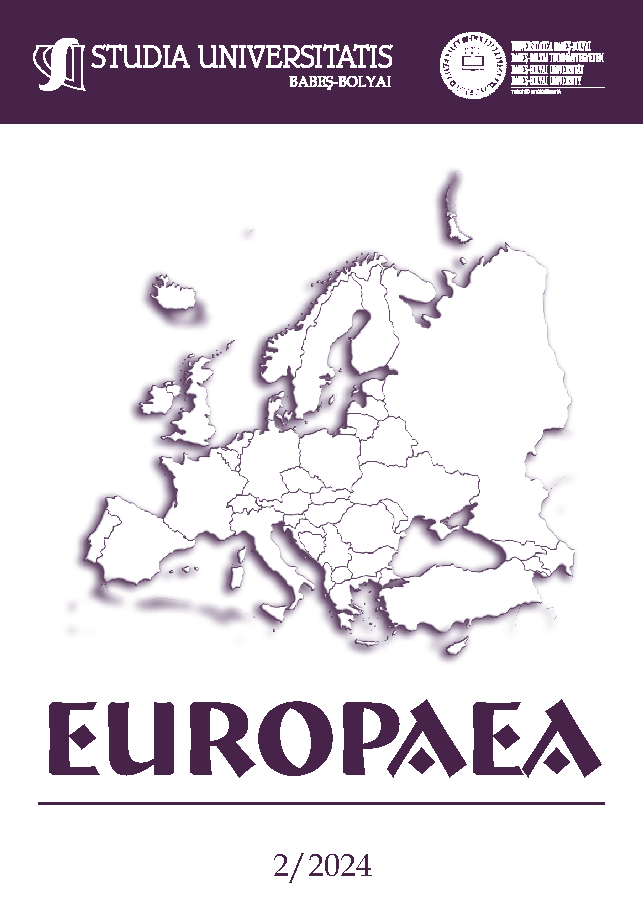SOCIETY OF THE MASK. THE DISCONNECT BETWEEN HONNE AND TATEMAE IN JAPANESE CULTURE AND SOCIAL PHENOMENA
DOI:
https://doi.org/10.24193/subbeuropaea.2024.2.04Keywords:
mask, identity crisis, post-war Japan, honne, tatemaeAbstract
The present paper explores the correlation between the mask as a major theme in Japanese art throughout history and as an important social tool, especially when constructing social hierarchies. Expanding upon Erving Goffman’s theory of self-presentation, we focus on the dissociation between subjective intentions (honne) and the social mask/façade (tatemae) as one of the leading factors behind Japan’s post-war identity crisis, reflected in the autobiographical works of authors such as Yukio Mishima and Osamu Dazai. We also seek to analyze contemporary negative social phenomena such as hikikomori through the lens of this cultural conflict.
References
1. Allison, Anne (2012), “Ordinary Refugees: Social Precarity and Soul in 21st Century Japan” in Anthropological Quarterly, no. 2, vol. 85, 345-370.
2. Dazai, Osamu (1958), No Longer Human, New York: New Directions Publishing Corporation.
3. Eberstadt, Nicholas (2012), “Japan Shrinks” in The Wilson Quarterly, no. 2, vol. 36, 30-37.
4. Foucault, Michel (1988) Madness and Civilization – A History of Insanity in the Age of Reason, New York: Vintage Books.
5. Goffman, Erving (1956), The Presentation of the Self in Everyday Life, Edinburgh: University of Edinburgh, Social Sciences Research Centre
6. Hoaas, Solrun (1982), Noh Masks: The Legacy of Possession, in The Drama Review: TDR, no. 4, vol 26, 82-86.
7. Lai, Chen (2018), “Historical and Cultural Features of Confucianism in East Asia” in Roger T. Ames, Peter D. Hershock (ed.), Confucianisms for a Changing World Cultural Order, Honolulu: University of Hawai’i Press, 102-111.
8. Ministry of Health, Labor and Welfare, Jikou doutai toukei (Vital Statistics) 2011-2022, [https://www.e-stat.go.jp/en/stat-search/files?page=1&layout=datalist&toukei=00450011&tstat=000001028897&cycle=7&tclass1=000001053058&tclass2=000001053061&tclass3=000001053065&tclass4val=0], 15 May 2024.
9. Mishima, Yukio (1958), Confessions of a Mask, New York: New Directions Publishing Corporation.
10. Murata, Sayaka (2016), Convenience Store Woman, London: Granta Publications.
11. Murata Sayaka (2020), Earthlings, London: Granta Publications.
12. Odin, Steve (1994), “Models of the “Social Self” in Modern Japanese Philosophy and G. H. Mead’s American Pragmatism” in American Journal of Theology & Philosophy, no. 3, vol. 15), 241-255.
13. Park, Robert Ezra (1950), Race and Culture, Glencoe: The Free Press.
14. Vogel, Suzanne Hall (2012), “Japanese Society under Stress”, in Asian Survey, no. 4, vol. 52, 687-713.
15. Watsuji, Tetsuro (1996), Watsuji Tetsuro’s Rinrigaku, Albany: State University of New York Press.
16. Yamamoto, Yutaka (1990), “A Morality Based on Trust: Some Reflections on Japanese Morality”, in Philosophy East and West, no. 4, vol. 40, 451-469.
Downloads
Published
How to Cite
Issue
Section
License
Copyright (c) 2024 Studia Universitatis Babeș-Bolyai Studia Europaea

This work is licensed under a Creative Commons Attribution-NonCommercial-NoDerivatives 4.0 International License.



